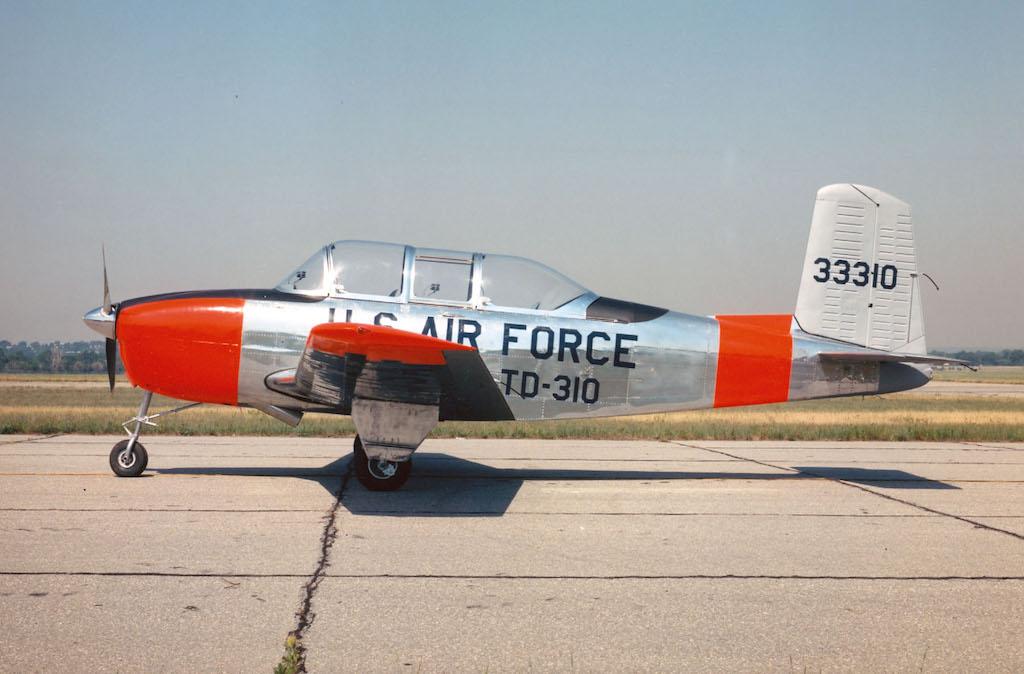Structural Integrity Factors Can Cause Premature Failure, Part 2

The U.S. Air Force used the T-34A Mentor (Beechcraft Model 45) for flight training in the 1950s.
The certification standards under Federal Aviation Regulation 23.349 (2)(b) specify an airplane’s asymmetrical flight G limit for any given weight to be two-thirds of the symmetric G load. Incidentally, since the symmetric load factor limits in most business jets are relatively low, this fact brings into question many of the standard upset recovery techniques, especially those that induce asymmetric loads.
This provides the setting for some of the serious concerns that weren’t adequately addressed when I was offered a chance to visit Aviation Safety Training for a demonstration flight. The timeframe of the sales pitch was mid-2003.
On Nov. 19, 2003, two Beech A45s operated by Aviation Safety Training took off for their training session. According to the pilot-rated passenger of the second airplane in the formation: “The briefing included the pertinent radio and formation information for a flight of two, to and from the practice area. [T]he pre-flight brief did not include air combat maneuvers, as I remember it.”
After the upset recovery training was completed, the pilot in command of the sister aircraft suggested that they engage in a simulated air combat demonstration. The flight leader agreed.
It is significant to note that all Beech A45s were operating under an FAA airworthiness directive (AD) that included significant limitations on the load factors and airspeeds. On July 9, 1999, the FAA issued AD 99-12-02 mandating flight and operating limitations on all Beech A45s (T-34s), which prohibited operations in acrobatic and utility categories, limited the flight load to 2.5 G; and limited the maximum airspeed to 175 mph.
A former customer of the operator had flown in the accident airplane in May 2001. He recalled that during the flight, the instructor pilot told him that they had pulled about positive 6 G.
The two aircraft made several turns as the airspeed continually decreased. After two or three turns, one of the Beech A45s was in a climbing right turn when the right wing separated from the airframe. The airplane spun uncontrolled to the ground, killing both occupants. The right wing was found approximately one-half mi. north of the main wreckage. Examination of the separated wing revealed extensive fatigue cracking in both forward and aft wing spars.
The NTSB determined that the upset recovery training provider failed to comply with applicable airworthiness directives, which required wing spar inspections, continued operating the aircraft beyond the compliance time extension granted by an approved alternate means of compliance. Another causal factor was the operation of the aircraft outside of its flight G load limitations.
Undetected Widespread Fatigue Cracking
Tragedy befell that same operator a little more than a year later. A sister aircraft was maneuvering during upset recovery training over Montgomery, Texas on Dec. 7, 2004.
A review of an onboard video revealed that the instructor and student were performing training maneuvers that included steep turns, stalls, accelerated stalls, unusual attitudes and recoveries from these to a wings-level attitude using several techniques. While in a steep nose- down attitude (no sky visible in the view), the instructor told the student to “pull it into a stall right now.” At that moment, the recording ended.
The main wreckage came to rest on the side of a hard-surface gravel road and the left wing, left horizontal stabilizer, inboard section of left elevator, aft canopy frame and a portion of the left-wing skin were found in a wooded area approximately 0.4 mi. southwest of the main wreckage.
Examination of the wing and carry-through structure revealed the structure failed as the result of extensive and widespread fatigue cracking. The cracks in the channels were in hidden areas and probably could not have been directly detected without extensive disassembly of the structure. However, the cracks in the webs could have been easily detected, and the crack in the forward web apparently was detected, based on the stop-drilled hole and notes in the maintenance records.
The NTSB determined the inflight separation of the left wing was a result of extensive fatigue cracking throughout the wing carry-through structure.
Analysis of accelerator data from firefighting aircraft discovered numerous exceedances of airplane maximum-G operating limitations, as we discuss in Part 3.
Structural Integrity Factors Can Cause Premature Failure, Part 1: https://aviationweek.com/business-aviation/safety-ops-regulation/struct…





